
It comes as no surprise that multitools can plow through drywall, baseboards, and MDF — but can an oscillating tool cut metal?
The answer is a resounding YES! Not only can these versatile machines make light work of aluminum sheeting, stainless steel bolts, and copper piping — but in many circumstances, they are the go-to tool for the job.
Sadly, many oscillating machine owners never consider their multitool can be utilized for these more extreme projects — resigning their poor lonely unit to simple timber and plastic cutting. That’s why it’s important for me to show you that these flexible tools are more than capable of tackling metalworking projects.
Here is your complete guide to cutting different metal formats with a multitool.
How to Cut Metal With an Oscillating Tool
Whether you’re trimming pipes to install a new shower, or shaping metal sheeting for replacement car bodywork — the general procedures for shearing and cutting metal with a multitool are the same:
Take It Steady
Sure, you may have picked out your shiny new multitool for its immense speed — but hold back buddy, this isn’t a race. Whatever metal type you’re addressing, always start on the lowest rapidity setting and gradually increase — never exceeding 50 percent of maximum velocity.
Metal is, unsurprisingly, seriously dense. Going crazy on the speed settings runs the risks of:
Kickback — ruining your project and causing a physical injury hazard.
Excessive heat generation — damaging your target material and your blade.
Stress on the motor — causing overheating and component damage.
Lack of control — wrecking your project medium.
Cutting metal with a multitool is like making love to a beautiful woman — decide exactly where you’re going to penetrate, begin with a slow tempo and gradually build intensity, and as I shall discuss next, always wear protection.
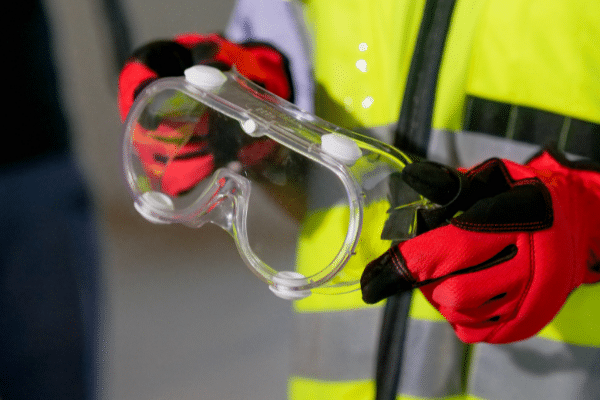
Safety First
Naturally, you should always don protective gear when using any power tool. However, it’s even more crucial when cutting metal with a motorized blade.
The issues are manifold — including, the sparks created by metal-on-metal action, wayward flying shards, spurs and burrs, and the intense friction-generated heat in the blade and target material.
Therefore, at the minimum, before slicing away at any metal format with your oscillating multitool, ensure you’re safeguarded with:
- Eye protectors.
- Heat-resistant gloves.
- Respiratory mask.
- Reinforced work boots.
Prepare Cutting Area Thoroughly
You know the adage — measure twice, cut once.
When addressing metals with your oscillating multitool, I suggest — measure five times, cut once.
Aluminum, steel, and copper are expensive materials. Screw up your cutting length or starting position, and your once money-saving DIY project becomes significantly harder on your pocket.
Prepare Your Machine
Before wielding any multitool, you should always check it’s in good working order prior to use. This is paramount when addressing dense materials with a multitool, as impeded function can damage your tool, your target metal, and possibly yourself.
Therefore, run through this quick checklist before you begin to cut:
- Ensure you have a suitable blade fitted.
- Check that the head is well-oiled.
- If a corded machine, use a power breaker.
- Run the machine without a blade first — check the oscillation is steady, constant, and true.
- Examine the cord (if mains-powered) for weakness, cuts, or breaks.
- For cordless models, ensure the lithium cells have sufficient juice.
Use the Correct Blade
You wouldn’t use a screwdriver to hammer in a nail — well, unless you’re my wife.
Ensuring you have the appropriate multi tool blade for tackling metal is crucial. Choose incorrectly, and you’ll wreck the cutting teeth, ruin your project, and place undue stress on the oscillator’s motor.
Hopefully, I don’t have to stress this, but obviously, choose a saw cutting head. Multitools typically arrive with a plethora of attachments — but the sanding plate, adhesive stripper, or grout remover accessories will not trim metal.
Depending on the project type, utilize either a segmented or plunge blade. Furthermore, at the very least, this should be a reinforced bi-metal cutter — for more dense metals, a carbide blade.
Here’s a brief guide to the correct format for your medium:
| Metal Type | Ideal Blade | Notes |
|---|---|---|
| Aluminum | Bi-metal blade | — |
| Copper | Bi-metal blade | Carbide for harder alloys |
| Bolts | Carbide blade | Bi-metal suitable for lower grades |
| Nails | Bi-metal blade | — |
| Stainless steel | Carbide blade | — |
| Sheet metal | Carbide blade | — |
| Machine screws | Carbide blade | Bi-metal suitable for lower grades |
| Rebar (reinforcing steel) | Carbide blade | — |
| Standard steel | Carbide blade | Bi-metal suitable for untempered |
How to Cut Different Metal Forms
Depending on your current multitool metal cutting job, techniques and procedures can vary slightly.
Here are the most common oscillating tool shearing projects that involve metal mediums.

Aluminum
As one of the softest metals — just below cesium, lead, and mercury — aluminum typically presents few challenges when cutting with a multitool, even for the novice.
Utilize a bi-metal plunge cut or segmented saw blade. Boasting a substantial set (the angle of the teeth from the blade) and generously-sized teeth, these cutters promise effortless efficiency while also allowing welcome burr and shard dispersion. Furthermore, with the vast majority of standard plunge-cutting blades reaching a depth of 1.5-2 inches — they can tackle the standard aluminum sheet and bar sizes.
Sure, if you have only a carbide cutter blade available, it will work adequately — but the inline cutting edge and small teeth will have a tendency to clog. Meaning your project is frequently interrupted as you stop to remove the detritus.
And! Should you have to pause your project to extract the burrs and spurs, for goodness sake, switch the multitool off, unplug from the mains (corded), or remove the battery (cordless). Unless, of course, you want to discover how effortlessly an oscillator can remove fingertips.
The main annoyance when addressing aluminum, especially sheeting, is that it flexes and vibrates significantly when cut with a multitool — not just making straight shearing challenging, but also reducing cutting efficiency as it, and your multitool, bounces around like a demented kangaroo. Therefore, always ensure you clamp as close as possible to the areas of address.
A quick word of advice. If you’re creating lengthy cuts in sheeting, drop the idea of your multitool and utilize snips instead — these handheld tools will deliver a more accurate trimming line and a smoother edge. Oscillators should be used on aluminum for detailing, cross-cutting, and corner work.
Key Points When Cutting Aluminum With a MultiTool
- Use a bi-metal plunge or segmented blade.
- Clamp close to the cutting area.
- Choose a blade with a significant set.
- For long cuts, use snips instead.
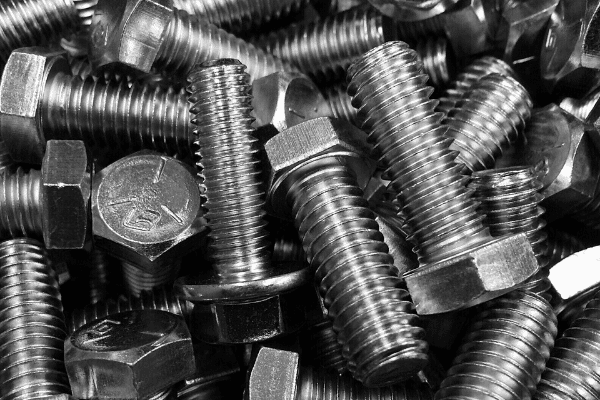
Machine Screws and Bolts
If you’re a metal fabricator, engineer, or knowledgeable DIYer, you understand that screws and bolts arrive in different strength formats — a factor that has to be taken into account when choosing the ideal blade. If the multitool cutter head is too soft, it may perish when used or deliver an uneven cut. Too strong, and you may lose control when shearing — ruining the finish.
Here’s my guide on the correct blade for bolt/screw density:
| Class of Bolt | Strength Level | Suggested Blade |
|---|---|---|
| SAE (Society of Automotive Engineers) | #2 grade | Bi-metal blade |
| SAE (Society of Automotive Engineers) | #5 grade | Carbide blade |
| SAE (Society of Automotive Engineers) | #8 grade | Carbide blade |
| Metric Sizing | 4.8 rating | Bi-metal blade |
| Metric Sizing | 6.8 rating | Bi-metal blade |
| Metric Sizing | 8.8 rating | Carbide blade |
| Metric Sizing | 10.9 rating | Carbide blade |
| Metric Sizing | 12.9 rating | Carbide blade |
| Stainless Steel | A2 grade | Carbide blade |
| Stainless Steel | A4 grade | Carbide blade |
In many applications, the screw will already be in-situ and secured between materials. This provides suitable stability for you to shorten or flush the bolt level with the surrounding surface — the advantage of a compact multitool being that it can access areas that are too confined for reciprocators, hacksaws, or angle grinders.
However, if you’re resizing or head-removing a loose screw, ensure that you secure tightly in an industrial-grade vice. Trust me, a stainless steel screw flying haphazardly across your garage or workshop isn’t desirable.
Key Points When Cutting Aluminum With a MultiTool
- Check the strength grade of the hardware fixture.
- Use a carbide or bi-metallic blade.
- Utilize a plunge blade on wide diameter bolts.
- Secure loose bolts and screws in a vice.

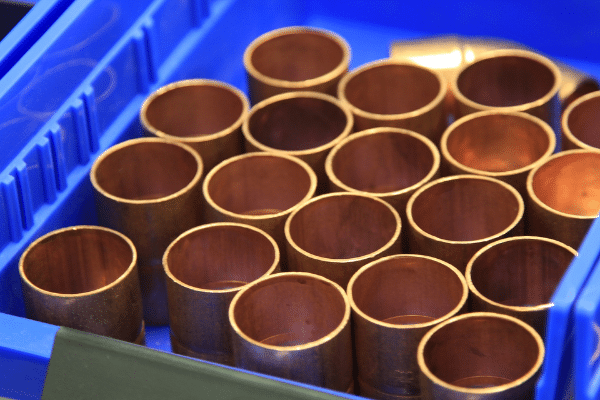
Copper and Soft Alloys
For the majority of DIYers, copper will be the metal they’re most likely to cut with a multitool — heat exchangers, electrical wiring, and most commonly plumbing piping can all be effortlessly shaped and resized with an oscillating machine.
With a relatively low tensile strength — usually between 200-300 MPa (megapascals) — a standard plunge or segmented bi-metal blade is sufficient. Theoretically, you could use a carbide blade, but it would be akin to using a chainsaw to slice bread.
That said, some copper alloys have a density and robustness equal to steel — for example, beryllium copper, with 1000 MPa tensile strength. Unless you work in hardcore engineering, where this material is used for industrial springs, you will not come across this medium in your home projects. But, if for some reason you do need to shear extreme alloys, use a carbide blade.
Should you be cutting loose copper piping, you’ll most likely be dealing with long stock — it generally arrives in six or twelve-foot lengths. Hence, as with aluminum sheeting, always ensure you secure in a vice as close to the point of address as possible to prevent bouncing.
Furthermore, remember copper is soft! You will need some plastic or rubber cushioning in your vice jaws to prevent crushing of the pipe body.
Key Points When Cutting Copper Pipe With Oscillating Tool
- Use a bi-metal blade on standard copper.
- Utilize a carbide cutting head on beryllium copper.
- Secure in a vice close to the point of address.
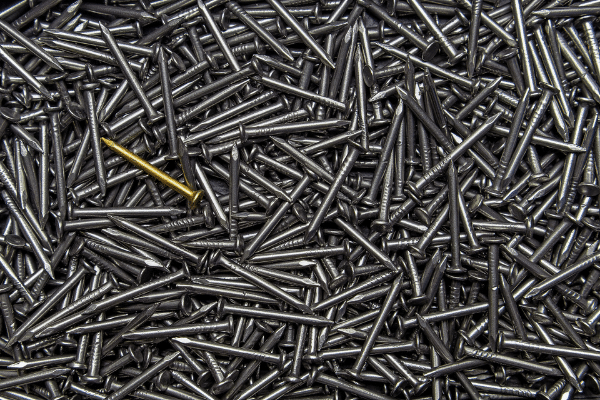
Cutting Nails With Oscillating Tool
Oscillating multitools are ideal for removing protruding nails’ points and heads in order to make them flush with the surrounding material. Typically made from steel, their tensile strength can be anywhere from 300-700 MPa, meaning you should use a bi-metal or carbide cutter depending on the hardware toughness.
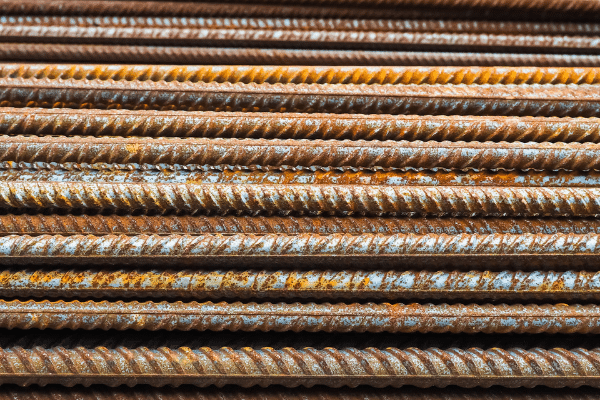
Rebar
Abbreviated from reinforcing bar, rebar is a thick carbon steel wire used to add additional strength to concrete and masonry. Produced in differing toughness grades, the blade you require depends on its robustness:
| Grading System | Rating | Suggested Blade |
|---|---|---|
| United States | 40 | Bi-metal blade |
| United States | 60 | Carbide blade |
| United States | 75 | Carbide blade |
| United States | 80 | Bi-metal blade |
| United States | 100 > | Bi-metal blade |
| Metric | < 420 | Carbide blade |
| Metric | 520 > | Carbide blade |
That said, handheld bolt cutters or angle grinders are typically more suited to trimming rebar — as the knurled surface tends to deflect the small multi tool blade, leading to an uneven shear.
However, multitools are excellent for making flush cuts — especially when the rod ends protrude from dried concrete or cement.
Key Points When Cutting Copper Pipe With Oscillating Tool
- Check rebar grade and use a carbide or bi-metal blade.
- Usually, an angle grinder will be preferable over a multitool.
- Use for flush cutting.
Conclusion
Don’t assume your multitool is purely for drywall, timber, and plastic — give it a challenge and allow it to tackle metal mediums too!
Whether you’re trimming copper pipes, flushing bolts and screws, or resizing rebar — your oscillating machine can cope. Just check the strength and density of your target material, and use either a carbide or bi-metal blade. And always, wear protective equipment.
I genuinely hope you enjoyed this article and found it informative — and understand why I felt it crucial to reveal the metal cutting capabilities of these versatile units. If you have a colleague or buddy who you believe would equally benefit from reading this Can an Oscillating Tool Cut Metal article — please feel free to share!
Can Oscillating Tool Cut Metal? FAQs
Q: What Are the Best Multi Tool Metal Cutting Blades?
For dense metals such as steel, use a carbide blade. On softer mediums like copper and aluminum, utilize a bi-metal blade.
Q: Are Oscillating Tool Metal Cutting Blades Expensive?
No! While carbide blades tend to be harder on the wallet than the bi-metal format, you can still pick up a pack of three for around $25-$30. Furthermore, with their robust construction, you can expect long blade life even when cutting dense mediums.
Q: What Metal Cutting Blade For Oscillating Tool When Addressing Copper?
As a generally soft metal, you can use a bi-metal plunge or segmented blade on copper sheeting and piping. For denser alloys, for example, beryllium copper, you will need a more durable carbide blade.
Q: How Deep Can An Oscillating Tool Cut Metal?
Standard multitool blades can cut to a depth of 1.5-2 inches — meaning they can typically shear through pipes and screws in one pass.
Q: Can an Oscillating Multitool Cut Lead?
Yes! As a low-density metal, oscillating tools are ideal for shaping and forming lead. However, if you’re making lengthy cuts in sheeting, you will achieve a finer finish using manual snips.










